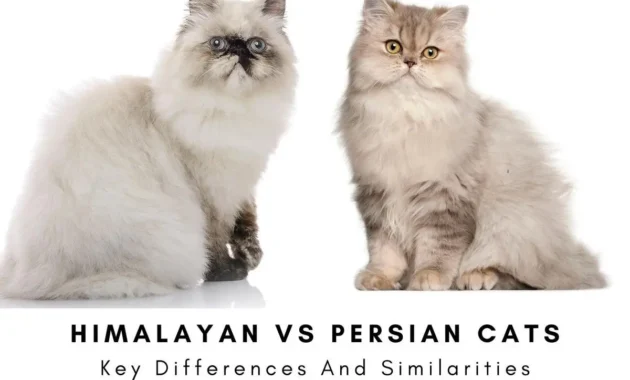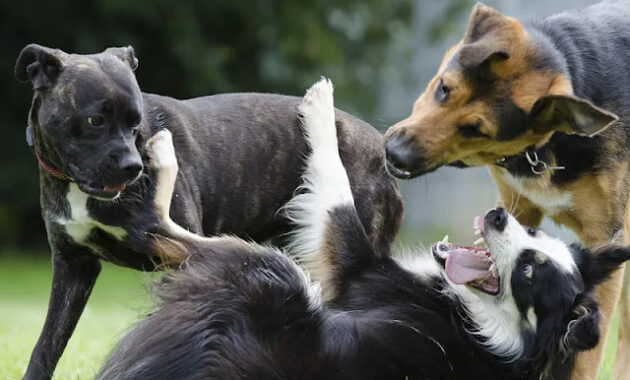If you’re considering getting a cat, you may be wondering about the differences and similarities between two popular breeds: Himalayan vs Persian cats.
While both breeds are known for their luxurious coats and gentle personalities, there are some key differences that may help you decide which one is right for you.
First, it’s important to understand that Himalayan cats are a type of Persian cat, bred specifically for their color points.
This means that they have the same body type and temperament as a Persian but with the added characteristic of colored points on their face, ears, paws, and tail.
Understanding this difference is just the beginning of what you need to know before choosing between these breeds.
In this article, we’ll explore the similarities and differences between Himalayan and Persian cats, as well as important health considerations for each breed.
Key Takeaways
- Himalayan cats are a type of Persian cat, bred for color points, but have a flatter face and are more prone to respiratory problems.
- Both Himalayan and Persian cats require regular grooming, a high-quality diet, and physical activity, but have different personalities and physical attributes.
- Persian cats are more laid back and independent, while Himalayan cats are more active and playful.
- Both breeds are prone to respiratory and eye problems due to their flat faces, and regular veterinary check-ups are important to reduce the risk of health problems.
What Is A Himalayan Cat?

If you’re curious about Himalayan cats, you’ll want to know about their history and characteristics.
These felines are a cross between Siamese and Persian cats, and were first bred in the 1930s.
They have a distinctive appearance, with long hair and pointed ears, and are known for their affectionate and playful personalities.
History of the Himalayan Cat
You’ll be fascinated to know that the Himalayan cat breed was created in the 1930s by breeding Siamese and Persian cats, resulting in a cat with the pointed coloration of a Siamese and the long, fluffy fur of a Persian. The breed was named after the Himalayan mountains because of their striking resemblance to the pointed peaks.
The Himalayan cats, also known as ‘Himmies’, quickly became popular among cat lovers due to their striking appearance and affectionate personalities.
The Himalayan cat’s history is closely tied to that of the Persian cat. The Himalayan breed was initially considered a color variety of the Persian breed, and it was not until the 1950s that the Cat Fanciers’ Association recognized the Himalayan as a separate breed.
While the Himalayan and Persian breeds have many similarities, the key difference between them is their coat color and pattern. The Himalayan cat is known for its pointed coloration, while the Persian cat has a solid color coat. Additionally, the Himalayan has a flatter face than the Persian, making it more prone to respiratory problems.
Characteristics of the Himalayan Cat
Get ready to be amazed by the unique traits of the Himalayan cat, a gorgeous feline that’s sure to capture your heart. This type of cat is often compared to its cousin, the Persian cat, but there are some key differences between these two breeds.
Here are a few characteristics that make the Himalayan cat stand out:
- Luxurious coat: The Himalayan cat has a long, silky coat that comes in a variety of colors, including seal point, blue point, chocolate point, and lilac point. This unique coat requires regular grooming and care to maintain its luster and beauty.
- Charming personalities: Himalayan cats are known for their sweet and affectionate personalities. They love to cuddle and are often quite vocal, making them great companions for those who enjoy spending time with their pets.
- Unique set of characteristics: In addition to their coat and personality, Himalayan cats have a few other unique traits that set them apart from other breeds. They have short, stocky bodies and round faces, and they tend to be more active and playful than Persian cats.
While there are certainly similarities between Persian and Himalayan cats, it’s clear that these two breeds have their own distinct set of characteristics. If you’re considering adding a Himalayan cat to your family, be prepared to fall in love with their beautiful coat, charming personality, and unique quirks.
What Is A Persian Cat?

So, you’re interested in learning about the Persian cat. Let’s start with its history. The Persian cat is one of the oldest cat breeds, originating in Persia (modern-day Iran) in the 1600s.
Over time, the breed has evolved to become the beautiful and beloved pet that we know today. Now, let’s talk about the characteristics of the Persian cat. These include their long, luxurious fur, flat faces, and laid-back, affectionate personalities.
History of the Persian Cat
The history of the Persian cat dates back to ancient times, with evidence of their existence found in hieroglyphics from 1684 BC in Egypt. This longhaired breed is one of the oldest breeds of cats and has been revered for centuries for their beauty and companionship. The Persian cat was originally known as the ‘Longhair’ in Europe, but their name was later changed to ‘Persian’ due to their association with the country of Iran, which was previously known as Persia.
Here are some interesting facts about the history of the Persian cat:
- The first Persian cats were brought to Europe by traders from Turkey and Iran in the 17th century.
- The Persian cat was first recognized as a distinct breed in the late 19th century by the Cat Fanciers Association.
- The Persian cat’s face has changed over time due to selective breeding, with some breeders preferring a flatter, more ‘doll-like’ face and others preferring a more traditional, longer face.
- In the early 20th century, Persian cats with short coats were bred in an attempt to create a new breed, but this experiment was ultimately unsuccessful.
Despite their differences, the Persian cat and the Himalayan cat share many similarities, including their affectionate and loyal personalities.
Characteristics of the Persian Cat
With their luxurious, fluffy coats and distinctive flat faces, it’s easy to spot a Persian cat in a crowd. This longhaired breed has been around for centuries and is known for its calm and gentle demeanor. Persians come in a variety of colors and patterns, including solid colors, tabby, bicolor, and more. They are also known for their expressive eyes, which range in color from blue to copper.
When comparing Persian cats to Himalayan cats, there are some visual differences to take note of. While both breeds have longhaired coats, the Himalayan has a shorter face and a more pointed snout. Additionally, Himalayans come in a limited range of colors, including seal, chocolate, blue, lilac, red, and cream.
Despite these differences, both breeds share many similarities, including their love for lounging and their affectionate nature.
Differences Between Himalayan Cats And Persian Cats
If you’re considering adopting a cat and you’re stuck choosing between a Himalayan and a Persian, it’s important to note the physical and temperament differences between the two breeds.
Physically, Himalayans have a more compact build with a flatter face and shorter nose than Persians.
In terms of temperament, Himalayans tend to be more playful and active, while Persians are known for their calm and affectionate demeanor.
Physical Differences
Compared to Persian cats, Himalayan cats have shorter fur and a more pointed face, making them ideal for people who prefer low-maintenance pets. For instance, if a busy professional wants a cat that’s easy to groom and doesn’t shed as much, a Himalayan cat might be a better choice than a Persian.
Himalayans have a thick, plush coat that doesn’t mat as easily as the longer fur of Persians. This means that Himalayans require less grooming and are generally easier to care for. Additionally, their pointed face gives them a unique look that distinguishes them from other cat breeds.
While Himalayans have shorter fur than Persians, they are still known for their luxurious coat. However, unlike Persians, Himalayans have a pointed pattern on their coat that is reminiscent of Siamese cats. This is because Himalayans are actually a cross between Persians and Siamese cats. As a result, they have inherited some of the distinctive features of both breeds.
If you’re looking for a Himalayan, be sure to find a reputable breeder who will be able to provide you with a healthy, well-socialized kitten. Overall, the physical differences between Persian and Himalayan cats make them two distinct but equally lovable breeds.
Temperament Differences
The temperament of each breed varies greatly, providing potential owners with distinct options for their ideal feline companion.
Himalayan cats are known for their affectionate nature and love to be around their owners. They are social butterflies and enjoy being the center of attention. They require more attention and affection from their owners compared to Persian cats. However, they are prone to health concerns such as respiratory issues.
On the other hand, Persian cats tend to be more laid back and independent. They prefer to spend time alone and are not as demanding of their owner’s attention. They have a reputation for being low maintenance, while they are more susceptible to kidney problems.
Overall, when choosing between a Himalayan or Persian cat, it is important to consider the temperament differences and potential health concerns. Both breeds make great companions, but their unique personalities require different levels of attention and care. By understanding these differences, potential owners can make an informed decision on which breed is best suited for their lifestyle and needs.
Himalayan Vs Persian: Similarities
As you explore the similarities between Himalayan and Persian cats, you’ll notice that they share several physical attributes. Both breeds have a similar body structure, with long, silky fur and a round face.
Additionally, they share some temperament traits, such as being affectionate and calm.
Physical Attributes
Imagine stroking the soft, fluffy fur of a Himalayan cat and then feeling the sleek, silky coat of a Persian cat – the physical attributes of these two feline breeds are quite distinct.
Here are some key differences between the two longhaired breeds:
- Himalayan cats have a stockier build and a rounder head shape compared to Persian cats, which have a more elongated body and a flatter face.
- Himalayan cats have striking blue eyes, whereas Persian cats can have a variety of eye colors.
- Persian cats are known for their luxurious, thick, and often curly fur, while Himalayan cats have shorter fur that is still very soft to the touch.
It’s important to note that both Himalayan and Persian cats are flat-faced breeds, which can lead to some respiratory issues. Additionally, while these two breeds may look similar, they have different origins – Himalayan cats were bred from Siamese cats and Persian cats, while Persian cats have been around for thousands of years.
Knowing the physical attributes of these two breeds can help you decide which one’s the right fit for your home and lifestyle.
Temperament Traits
You’ll likely love the lovely and lively temperament traits of these longhaired cat breeds, whether you choose a Persian or a Himalayan.
Persians are known for their sweet and affectionate disposition, often seeking out cuddles and attention from their owners. They’re also typically calm and laid-back, making them great lap cats and perfect for apartment living.
On the other hand, Himalayans tend to be a bit more curious and playful than their Persian counterparts. They’re known for their silly antics and can often be found chasing toys around the house or jumping up to climb on furniture. Despite their playful nature, Himalayans are still very affectionate and love to snuggle up with their owners for a nap.
Overall, while there are some differences in temperament between these two breeds, both Persians and Himalayans are known for being loving, loyal, and wonderful companions.
Health Considerations for Himalayan and Persian Cats
When considering the health of your Himalayan or Persian cat, there are a few potential issues to keep in mind. Both breeds are prone to respiratory and eye problems and may require extra attention in these areas.
Additionally, it’s important to note the differences in grooming, exercise, and dietary needs between the two breeds so you can provide the best care possible for your furry friend.
The potential health issues that Himalayan and Persian cats
Although Himalayan and Persian cats are both known for their long, luxurious coats, they are prone to potential health issues such as respiratory problems and eye irritations.
Himalayan cats, in particular, are prone to upper respiratory infections and breathing difficulties due to their flat faces, which can cause issues with their nasal passages. It’s important to monitor their breathing and seek veterinary attention if you notice any symptoms of respiratory distress.
Persian cats, on the other hand, may have issues with their eyes, including excessive tearing and eye infections. Additionally, Persian cats are prone to polycystic kidney disease and progressive retinal atrophy, which can affect their overall health and vision.
Regular veterinary check-ups and proper grooming can help reduce the risk of these health problems in both Himalayan and Persian cats. Despite their potential health issues, both breeds make wonderful companions and come in a variety of colors, including the sought-after Persian and Siamese cats.
Comparison of the grooming, exercise, and dietary needs of both breeds
If you’re considering adopting a long-haired feline companion, it’s important to note that both Himalayan and Persian cats require regular grooming. However, the Persian cat needs daily brushing while the Himalayan needs it at least twice a week, according to the American Kennel Club. Grooming is essential to prevent matting, tangles, and hairballs, which can cause health issues.
Regular grooming also helps to distribute natural oils throughout their coats, keeping them shiny and healthy. Additionally, grooming time can be a bonding experience between you and your cat, so it’s a win-win situation.
When it comes to exercise, both breeds are not very active and prefer a laid-back lifestyle. However, it’s essential to provide them with some form of physical activity to maintain their health and prevent obesity. Interactive toys, scratching posts, and cat trees are great ways to keep them entertained and active.
In terms of dietary needs, both breeds need a high-quality diet that is rich in protein and essential nutrients. Consult with your veterinarian to determine the appropriate amount of food and feeding schedule to maintain a healthy weight for your feline companion.
Conclusion
So, now you know the key differences and similarities between Himalayan and Persian cats. Whether you want a cat with a fluffier coat or a cat that’s more active, both breeds have their own unique traits that make them great pets.
However, it’s important to consider the health considerations that come with owning these breeds. When it comes to health, Himalayan cats may be more prone to respiratory issues due to their short snouts, while Persian cats may be more prone to eye issues due to their flat faces. It’s important to keep up with regular vet check-ups and proper grooming to keep your furry friend healthy and happy.
Overall, both Himalayan and Persian cats make wonderful additions to any family. It’s up to you to decide which breed best fits your lifestyle and personality. Just remember, whether you choose a Himalayan or Persian cat, they will bring a unique and purrfectly delightful energy into your home.


